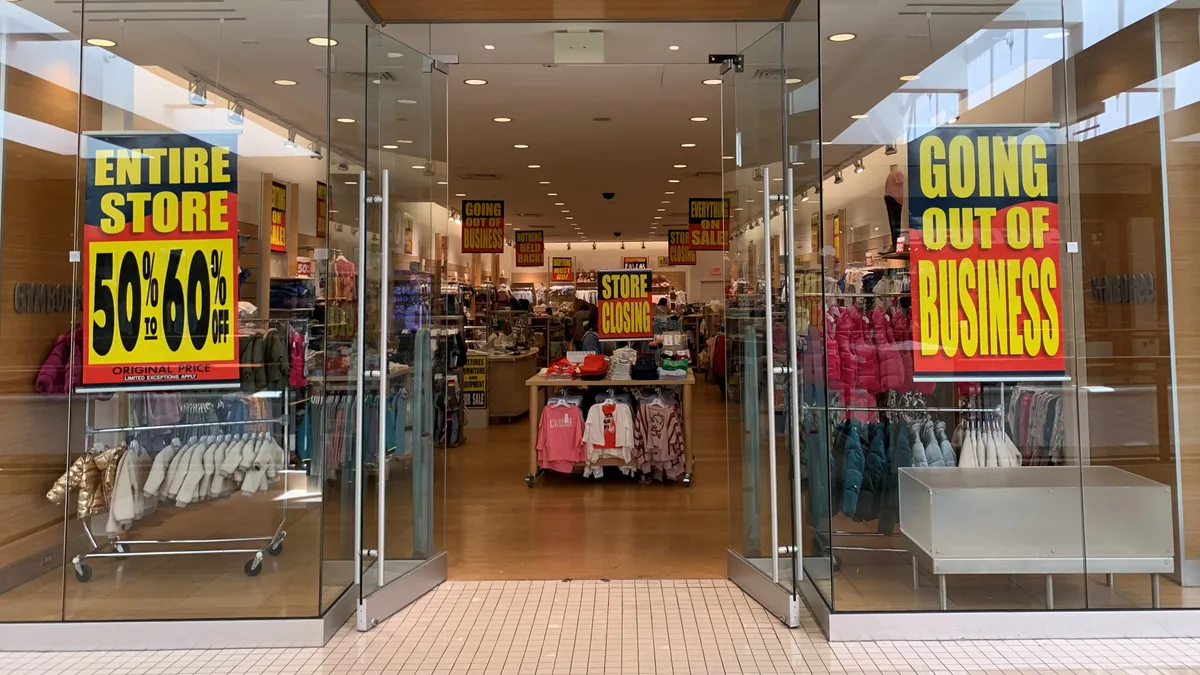Dive Brief:
- Store closures this year have surpassed 9,000 in the U.S., according to the latest estimates by Coresight Research.
- The firm put the exact figure at 9,302 by Dec. 20, nearly 60% more than the 5,844 stores that closed during 2018.
- Closures have also far surpassed the 4,454 store openings this year, according to Coresight. That is more than 1,000 more store openings than there were in 2018.
Dive Insight:
Driving a massive year for store closures were factors both dramatic and mundane. Retail bankruptcy liquidations ticked up, adding thousands to the year's count, while other retailers quietly tinkered with their footprints or pared them under pressure of sales declines. At the end of the year it's clear that retail is still over-stored and in the midst of a correction.
As Coresight analysts pointed out in a Dec. 13 report emailed to Retail Dive, more stores had closed by the 15th week of 2019 this year — spring, in other words — than in all of 2018. The wave of shutterings early in the year were driven largely by bankruptcy liquidations. Take Payless, which filed for its second Chapter 11 in less than two years in February. The footwear retailer was the biggest retail liquidation ever by store count, and represents nearly a quarter of Coresight's total closure count.
The retailer's Chapter 22 was a reminder of how tough the current retail environment still is. Even after shedding debt and hundreds of stores in its first bankruptcy in 2017, as well as revamping its executive team and working to update its omnichannel capabilities, the company still couldn't manage a sustainable turnaround.
Gymboree, Fred's, Shopko, Charlotte Russe and Charming Charlie — which were all retail liquidations as well — also contributed hundreds each to this year's closures.
But so did relatively healthy retailers, including Family Dollar and Walgreens, which pared their footprints this year to adjust to declining sales in parts of their business. Also on the list are retailers dealing with even more serious sales deterioration and distressed finances, including Ascena — which wound down its Dressbarn banner — and Pier 1. Both companies are trying to tame their expenses before their struggles become a full-blown crisis.
And don't expect the closures to stop anytime soon. John Mercer, head of research at Coresight, told Retail Dive this fall that closures could slow in 2020 after a 2019 peak, but he added that "I don't think that means it's going to abate rapidly and meaningfully. U.S. retail is still over-spaced."
Scott Carpenter, head of the retail solutions unit at B. Riley Financial's liquidation arm, Great American Group, recently said that mass closures could go on for up to two more years as malls close and retailers adjust footprints. He said specifically that 30% of current retail space "would cease to exist in its current form, as consumer buying trends shift increasingly online."














